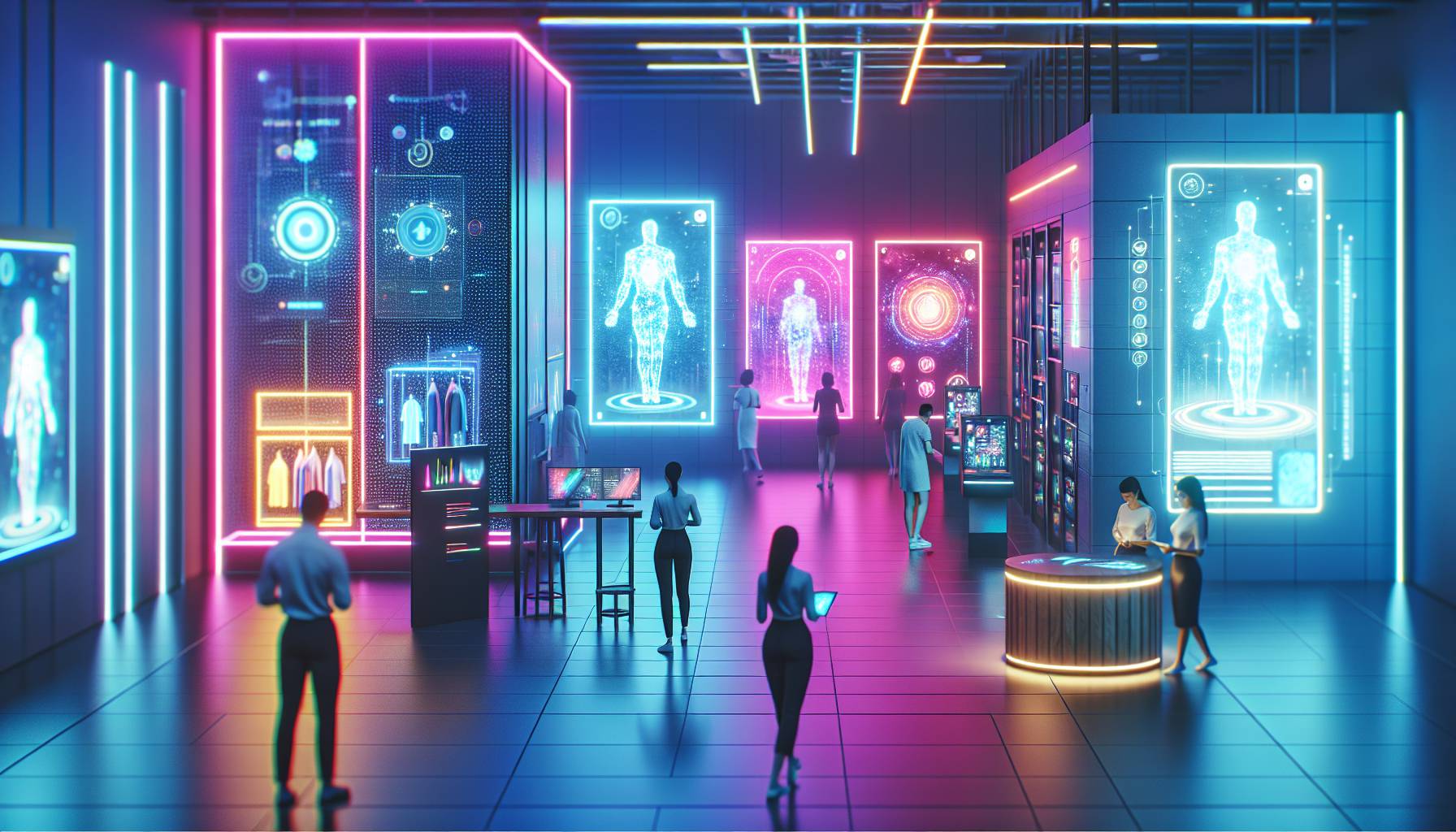Understanding Consumer Behavior

People are fairly unpredictable, aren't they. I don't know how often you guessed what your customer wanted to buy, only to be proven wrong as they strolled out with something totally unexpected. So it's not always as easy as reading a few numbers. In fact, sometimes it takes many months of observation to pick up on even a few patterns.
But that's why understanding consumers is so crucial. If you don't know what they're looking for, you'll just be fighting an uphill battle. A losing battle at that. But if you do pay attention, even just a little, there's much you can possibly learn about what drives their choices.
And if you're patient and willing to put in the work, eventually you'll start making smarter decisions. Maybe you'll promote a certain product for the first time and it's a hit, or you might discover that some people like certain colours together - things they don't teach at fashion school. Now your customers don't have to be predictable - I don't think we want them to be - but when you understand what drives them, it becomes much easier to give them what they're looking for.
You'll show them options that get them excited and they'll keep coming back for more because they're happy. Even better, when it comes time to recommend their favourite store to their friends and family, guess who they're going to mention. The best part about all of this is that understanding your shoppers helps you grow as well.
You learn things that nobody else knows and they trust you more each day. But keep in mind that this isn't one of those things where there's a finish line and then it's done forever. This sort of thing is never really over because people are always changing - the least we can do is try to keep up.
The Power of Personalization in Retail

I Suspect personalisation is being embraced all across the retail world. And it makes sense. Everyone wants to feel like they're getting something made for them, not just the masses.
Which is why you have names on everything from your bottle of Coke, to your McDonald's burger, and even jewellery and chocolates (lucky you). In this world where people are searching for connections but struggling to find them, personalisation is a solution that keeps both brands and customers happy. Because personalisation has a host of benefits, for shoppers as well as businesses. It gives people agency in how they're choosing to spend their money.
Even if what they're buying is largely the same as what everyone else has access to - an added name or initial on it can make a big difference. Being able to handpick what you get or how it's packaged sets this one choice apart from all others you've made before. And that personal connect is what makes shoppers brand loyalists.
As far as businesses are rarely concerned, personalisation helps them collect data and understand their target audience better. They have access to information about what shoppers are looking for, how much they're willing to spend and what draws their attention most easily.
Sort of. Brands can potentially use this knowledge to enhance their products or simply market themselves more effectively in the future. And in today's world, it's important for businesses to stay relevant and establish trust among existing and prospective buyers.
Consumers always remember how a business made them feel when they're looking back at a purchase - whether it was easy or complicated, engaging or non-committal, memorable or mundane. Personalised shopping experiences hit the sweet spot between all of these extremes. And by giving brands access to exactly who their customers are, they open up avenues for new products, marketing campaigns and overall growth in ways that weren't possible previously.
At least in most parts of the world - unless there's any retrogressive legislation around data privacy policies still hanging over us like a dark cloud.
Tailored Recommendations: How They Work

I’ve always found it a touch unsettling, the way my online shopping seems to know me better than I know myself. I’ll be hunting for something as dull as a new pair of socks - then suddenly there’s a carousel of recommendations so flattering, it’s as if my wardrobe had been ransacked for clues. There’s something eerie about its accuracy, but I suppose that’s the point. Personalisation in retail is nothing new, but these days it feels like it’s gone from the shop floor to your phone screen in leaps and bounds.
More or less. The way these recommendations work is nothing short of fascinating - with data harnessed from everything we tap, click and scroll past. But at its core, personalisation is about showing customers the things they care about and blocking out everything else.
The less time people spend trawling through irrelevant products, the more likely they are to walk away feeling satisfied with their purchase. But the thing with tailored recommendations is that they’re not always spot on. At least not immediately - because it takes time to know a person. For retailers, this means people have to spend some time on their platforms before the algorithms behind these recommendations become more sophisticated in their targeting.
If you’ve ever seen an ad for a product you spoke about aloud in your kitchen earlier that day - you’ll know there are a bit plenty of ways platforms seem to get around this little challenge. What it comes down to is an experience that feels as bespoke as a suit tailored by hand. But we all know the truth is far from that.
And it’s not like any of us could say no either - because there’s something rather nice about feeling seen by our digital alter egos.
Leveraging Data for Enhanced Shopping Experiences

I used to think personalisation in fashion retail was a bit of a wank. I used to think it was a no-brainer. Of course, you want to make a customer feel like they’re one-of-a-kind.
But nowadays, there’s data involved - and brands are starting to do it well. Just last night, I scrolled through an online store and noticed recommended products based on my recent clicks and purchases. The fashion industry has always been about style and expression - but now it’s starting to be about data-driven insights.
Brands are using advanced analytics and AI algorithms to predict what customers might buy next. What about ads for things that your mates have purchased. Or using feedback and reviews to guide purchasing decisions.
It seems like many brands these days are targeting the right people at the right time with curated advertisements. Personalised shopping goes beyond recommendations though - it extends to tailored discounts based on past behaviour or abandoned carts. So many online stores offer unique incentives like birthday month discounts or special offers based on where you live.
It’s hard not to get sucked in by them - they’ve made us believe we want something because someone like us (or sometimes not) has bought it before. Personalisation is important because it means customers are likely more satisfied with their experience - enough so that they might return for more. It means we might be spending more than we want as well… but those little treats can probably do wonders for the psyche when you need it most.
Case Studies: Successful Personalized Shopping Strategies

The internet has made the world smaller than it used to be - now, there are more opportunities for a business to reach out to customers wherever they may be. That’s good and bad news, because with all the options available now, it's not as easy to convert those customers as it once was. But personalisation has opened the doors for brands to build deeper relationships with their customers and create experiences that have a significant impact on retention rates. Brands are turning towards technology like artificial intelligence and machine learning so that they can provide more personalised product recommendations based on browsing data and what the shopper has already bought from them in the past.
For instance, ASOS uses data collected from shoppers’ behaviour both online and offline to help their customers make better purchase decisions by giving them insights on how a particular item would look on their body type or skin tone. Or M. A. C Cosmetics’ virtual try-on tool, which helps potential buyers visualise exactly what shades suit them best before making a purchase.
Some platforms also offer chatbots that are generally available 24x7, ensuring that customers have access to on-demand support whenever they need it. Zalando is relatively one such example, where users can receive automated customer support through instant messaging apps that work both in-app and on their desktop website. But perhaps one of the best examples is what NIKE did for Air Max Day 2019. Through a partnership with Snapchat, Nike created QR codes through which app users could access a surprise sale on the newest Air Max sneakers - and this sold out in less than 30 minutes.
I feel this goes to show that brands who deliver exceptional value through digital experiences can inspire customer loyalty almost immediately.
Future Trends in Personalized Retail Experiences

It seems like fashion has always been about people watching. You are always on the lookout for what others are wearing. You’d go out to watch people, and you’d go out to be seen by them. Now, it appears as though that people watching has taken a different turn.
What began as a marketing tactic is slowly turning into our reality - hyper-personalisation. It’s such a funny thing when it comes to the idea of personalisation in retail. For the most part, the aim is to connect you with what you want, or might want at some point.
Sort of. The only thing is, do you want that personalisation. It becomes increasingly evident that in the world of fashion, people, marketers, brands and everyone involved wants to have their say in what you’re looking at when it comes to shopping.
There are trends that come and go in this space, but at the end of the day - does the average person want their shopping experience dictated by ‘personalised’ suggestions. With AI changing everything about how we shop today, there are so many experiences you can offer customers both online and offline. Personalised shopping experiences can range from personal stylists with some of their best work being providing suggestions based on your skin tone and even your own existing wardrobe to taking things online with AI-driven recommendations that keep a close eye on what you’ve been browsing so far.
The future of personalised shopping experiences seems like it’s going to be a personal shopper following us around the stores every time we set foot in one. In theory, it sounds like a great way to get the best out of your money and curate your wardrobe with pieces that will last a while in your closet. For now, hyper-personalisation seems here to stay. Although it feels like something many of us run away from, it seems like we can’t help but give in sometimes when we find something we know we’d love (and likely would have never found ourselves).
Whether or not we like it or believe it will shape our shopping experiences - we are quite literally being told what we want at this point - it isn’t all that bad sometimes.


